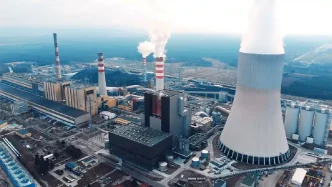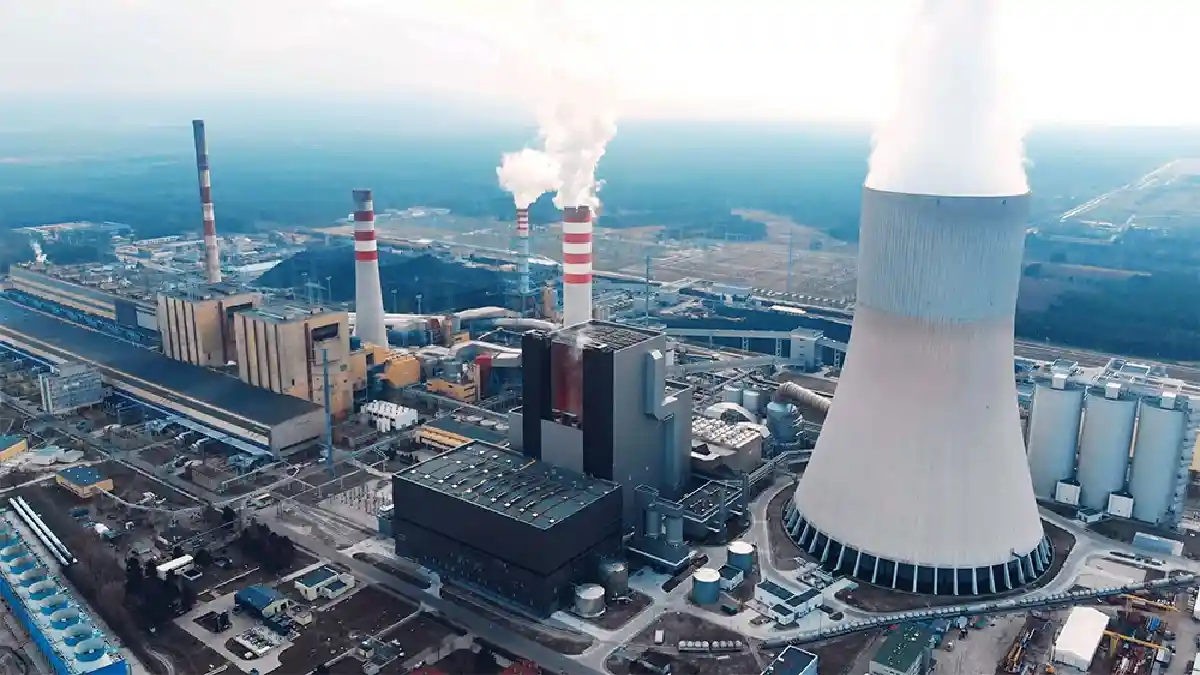Vietnam is taking a significant step toward energy security and technological advancement with the recent revision of its Law on Atomic Energy, passed during the 9th session of the 15th National Assembly. This landmark legislation establishes a robust legal framework to accelerate the development of the country’s first nuclear power plant in what was formerly Ninh Thuan Province, now part of Khanh Hoa Province, while promoting the peaceful use of atomic energy across various sectors. As Vietnam balances its ambitions for sustainable growth with global safety standards, the updated law signals the nation’s readiness to join the ranks of countries with modern nuclear energy programs.
A Strategic Leap in Energy Policy
The revised Atomic Energy Law positions nuclear technology as a national strategic priority for Vietnam, a country striving to meet rising energy demands while committing to a low-carbon future. At a press briefing in Hanoi on July 9, 2025, Nguyen Hoang Linh, Director General of the Vietnam Agency for Radiation and Nuclear Safety, emphasized the law’s role in facilitating the adoption of new-generation nuclear power technologies, including small modular reactors (SMRs). These compact, flexible reactors are seen as a key component of Vietnam’s green and digital transformation goals, offering a sustainable energy source that aligns with international climate commitments.
The legislation comes at a critical juncture for Vietnam, which has faced challenges in diversifying its energy mix amid rapid industrialization and urbanization. With coal still dominating the energy sector, the push for nuclear power represents a deliberate shift toward cleaner alternatives. The law’s comprehensive approach—covering the entire lifecycle of nuclear projects from site selection to decommissioning—demonstrates Vietnam’s intent to build a nuclear program that is both safe and sustainable. For the first time, a dedicated chapter on nuclear power plants addresses technical and regulatory aspects, ensuring that projects adhere to international benchmarks.
Balancing Innovation with Safety
One of the standout features of the revised law is its emphasis on safety and adaptability. Recognizing gaps in domestic regulations, the legislation permits the use of international standards or those from technology-supplying countries to ensure high safety levels during the development and operation of nuclear facilities. This pragmatic approach aims to fast-track the adoption of advanced technologies while maintaining rigorous oversight, a balance that is crucial for a nation embarking on its first major nuclear endeavor.
Nguyen Hoang Linh highlighted that the law clearly defines the role of the Vietnam Agency for Radiation and Nuclear Safety as the national regulatory body. Tasked with technical authority over radiation and nuclear safety and security, the agency will receive adequate staffing, financial resources, and infrastructure support, in line with guidance from the International Atomic Energy Agency (IAEA). This move underscores Vietnam’s commitment to meeting global standards, addressing past concerns about regulatory capacity that delayed earlier nuclear projects, such as the proposed Ninh Thuan 1 Nuclear Power Plant.
Moreover, the law introduces provisions to foster a culture of safety and nuclear security across society. By embedding these principles into the legal framework, Vietnam aims to build public trust and ensure the long-term viability of its nuclear energy program. This focus on societal engagement is particularly significant in a country where public opinion on nuclear power has historically been shaped by safety concerns following global incidents like Fukushima in 2011.
Digital Transformation in Nuclear Management
In a pioneering move, the revised law incorporates digital transformation into Vietnam’s nuclear energy sector. It introduces the concept of a national digital platform for nuclear energy, designed to enable real-time data sharing on critical aspects such as equipment status, licensing, personnel training, environmental monitoring, and incident response. This shift toward digitization is expected to modernize state management, enhance transparency, and strengthen oversight of radiation and nuclear safety.
The digital platform represents a broader trend in Vietnam’s governance, where technology is increasingly leveraged to improve efficiency and accountability. For the nuclear sector, this means regulators and operators can respond swiftly to potential issues, minimizing risks and ensuring compliance with safety protocols. Linh noted that this innovation aligns with Vietnam’s overarching digital transformation goals, positioning the country as a forward-thinking player in the global nuclear community.
Beyond operational benefits, the platform could serve as a model for other sectors in Vietnam, demonstrating how digital tools can bridge regulatory gaps and improve public access to information. While challenges remain—such as cybersecurity risks associated with digital systems—the initiative reflects a progressive vision for managing complex technologies in the 21st century.
Building a National Nuclear Industry
Strategically, the revised law is not just about building power plants; it is about laying the foundation for a national nuclear industry. It encourages technology adoption and transfer, while fostering domestic capabilities in nuclear equipment design and manufacturing. This long-term vision aims to reduce reliance on foreign expertise and create a self-sustaining ecosystem for nuclear technology within Vietnam.
The implications of this approach are far-reaching. By prioritizing the mastery of nuclear technologies, Vietnam is positioning itself to become a regional leader in atomic energy, potentially exporting expertise and equipment in the future. This ambition aligns with the country’s broader economic goals, including boosting high-tech industries and creating skilled jobs. However, achieving this will require significant investment in education, research, and infrastructure—areas where Vietnam has historically lagged behind more established nuclear nations.
Nevertheless, the law’s focus on domestic capacity-building is a clear signal of intent. It reflects a determination to move beyond merely importing technology to becoming an active participant in the global nuclear innovation landscape. For a country with limited experience in nuclear energy, this represents both an opportunity and a challenge, as Vietnam must navigate complex international partnerships while developing its own expertise.
Geopolitical and Economic Implications
Vietnam’s nuclear ambitions carry significant geopolitical weight in a region where energy security is often intertwined with political dynamics. As Southeast Asia grapples with energy shortages and the urgent need to transition to cleaner sources, Vietnam’s move toward nuclear power could influence regional policies and partnerships. Collaborations with nuclear technology providers—potentially from countries like Russia, Japan, or South Korea—will likely shape Vietnam’s foreign relations, while also raising questions about dependency and security.
Economically, the development of nuclear power plants and related industries could provide a much-needed boost to Vietnam’s energy sector. The Ninh Thuan 1 site, though delayed in the past due to financial and safety concerns, remains a focal point for these ambitions. If realized, the project could supply a substantial portion of the country’s electricity, reducing reliance on imported fossil fuels and supporting industrial growth. However, the high costs of nuclear infrastructure, coupled with the need for stringent safety measures, pose financial risks that the government must carefully manage.
Additionally, the emphasis on small modular reactors offers a glimpse into a more flexible future for Vietnam’s energy grid. Unlike traditional large-scale reactors, SMRs can be deployed in smaller communities or industrial zones, providing localized power solutions. This could be particularly transformative for remote areas of Vietnam, where access to reliable electricity remains a challenge. Yet, the technology is still emerging, and Vietnam will need to navigate uncharted territory as it integrates SMRs into its energy strategy.
Public Perception and Environmental Considerations
While the revised law addresses technical and regulatory aspects, the success of Vietnam’s nuclear program will also depend on public acceptance. Historical hesitance toward nuclear energy, driven by safety fears and environmental concerns, remains a hurdle. The government’s efforts to promote a culture of safety and transparency through the new legislation are a step in the right direction, but sustained public engagement will be essential to build trust.
Environmental considerations are equally critical. Although nuclear power offers a low-carbon alternative to coal, issues such as radioactive waste management and the potential for accidents cannot be ignored. The revised law’s focus on international standards and digital monitoring systems aims to mitigate these risks, but Vietnam must also invest in robust waste disposal solutions and emergency preparedness to reassure both citizens and international observers.
Furthermore, the redesignation of Ninh Thuan Province as part of Khanh Hoa Province adds a layer of administrative complexity to the nuclear project. Local communities near the proposed site will need clear communication about the benefits and risks of nuclear development, as well as assurances that their concerns are being addressed. Past resistance to the Ninh Thuan 1 project suggests that grassroots opposition could reemerge if these issues are not handled with care.
Looking Ahead: A Nuclear Future?
As Vietnam embarks on this ambitious journey, the revised Law on Atomic Energy stands as a testament to the country’s determination to secure a sustainable energy future. By prioritizing safety, innovation, and domestic capacity, the legislation lays a solid foundation for the development of nuclear power and the broader atomic energy sector. Yet, the road ahead is fraught with challenges, from financial constraints to public skepticism and geopolitical intricacies.
The success of Vietnam’s nuclear program will hinge on its ability to balance these competing demands while adhering to the highest international standards. As reforms progress and the first nuclear power plant takes shape, the world will be watching to see whether Vietnam can transform its bold vision into a reality, setting a precedent for other developing nations in the process. For now, the revised law marks a pivotal moment in Vietnam’s quest for energy security and technological advancement—a step toward a future that remains both promising and uncertain.
















